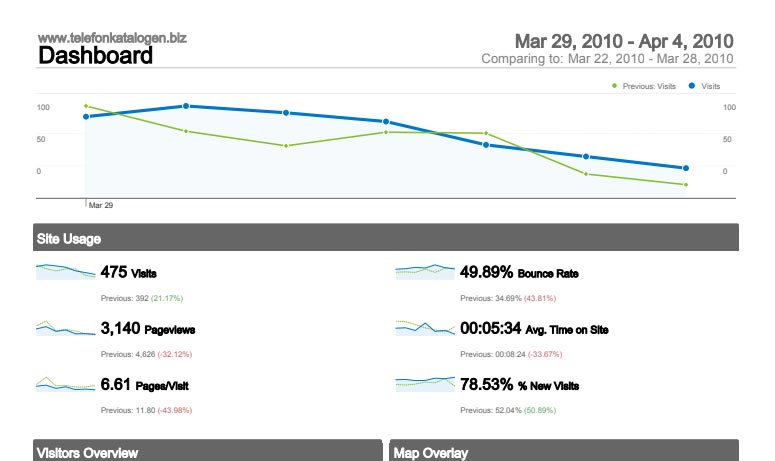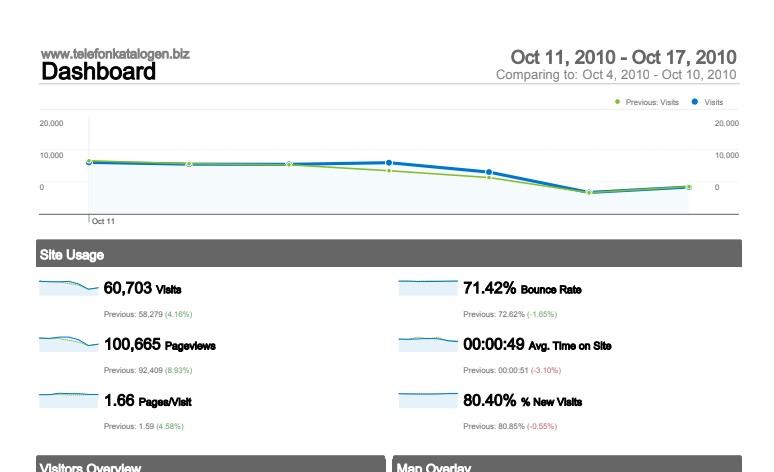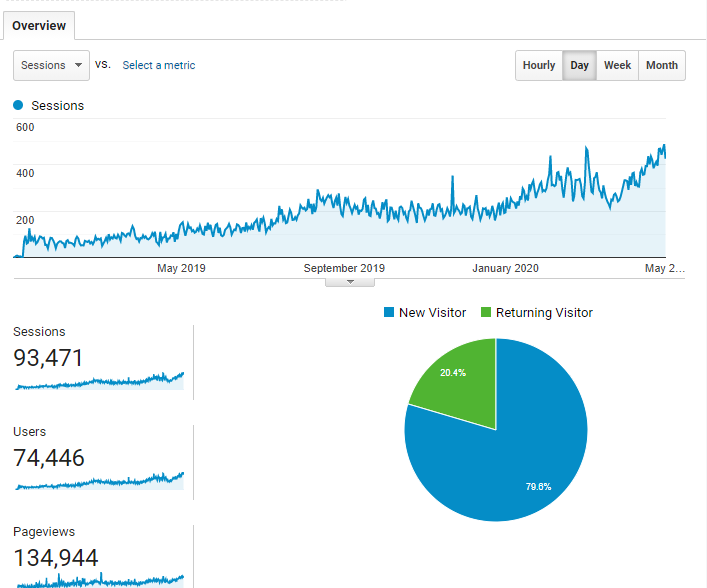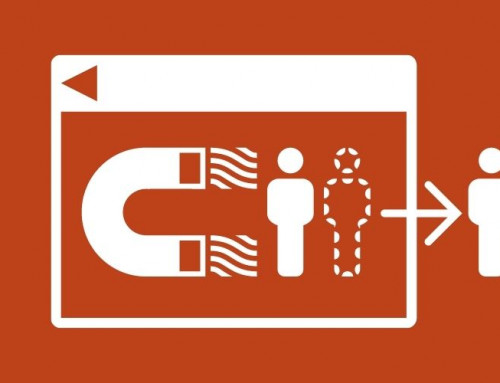As a business owner you might be wondering how long it takes to rank on google.
If you’re looking for instant success with SEO, then you might want to rethink your strategy.
A recent study found that the average number of days for a web page to rank in search results is 6.4, but there are many factors that can affect this time frame such as “the competitiveness of the keyword or phrase being optimized” and “keyword quality.”
The short answer is that there are no guarantees with SEO and ranking time varies depending on many factors.
The long answer is that factors such as the competitiveness of your keywords, site content, backlinks etc. can all affect the amount of time it takes for your website to appear in search results pages when someone searches for something related to your keyword, company or product.
But a strong SEO strategy can be the difference between your business failing or succeeding. Why? Because if and when you get it right, you can benefit from:
- Free traffic to your site by answering people’s search queries.
- Higher ranking in search results as your content improves and gets shared in social media.
- Increased brand awareness as people come to know, like, and trust your brand.
- The most important goal, more leads, clients and revenue.
As a small business owner, you don’t have the time to figure out everything. So in this guide, we’ve compiled data and cost-efficient tips to help you get the SEO basics right for your small business and rank on google faster than you thought possible.
Table of Contents
The question is, how long does it take to rank on Google?
The honest answer is, it depends.
Depends on your skill set or the team you hire, your goals, and the keywords you choose to target with your website.
Moreover, it takes time build a website that is trustworthy, has the right type of content in the right amount.
It takes time to build backlinks, or referencing sources.
So, the question should be posed the other way around.
How long does it take to create the content and build the links?
That’s how long it takes to rank on Google.
SEO is NOT a short term project.
Short term in SEO means anywhere around three to six months for an average website.
For businesses that want to see long term results, and want to position themselves everywhere their audience is searching, well, for them it takes years to achieve their goals.
The biggest benefit of long term goals are that they’ll grow a brand and will eventually pay less and less for advertising, yet still become more and more profitable.
To paraphrase a quote from Google:
“Brands are the what they want because they are trusted sources of information.”
So, without further ado, let’s get started with our understanding of how to get there fast:
What is Google Ranking?
Google ranks websites by the number of visitors it gets.
Google assigns a rank to each website, ranging from one star (lowest) up through five stars (highest). This ranking results from an algorithm that considers such variables as page views and time on-site to gauge how popular or valuable you are.
The Google Ranking is a vital aspect of any company. The higher the Google rank, the more likely it will be to search engines. Also, other online sources for necessary information or products in their industry.
How does Google rank pages and sites in general?
To find the answer, you have to look at how Google ranks pages and sites. The ranking is based on many factors, including content quality and site authority. Else, page rank, backlinks from other websites linking into your website. For example, these are called “inbound links,” age of web page. Besides, a measure that quantifies relevance using various algorithms.
What is Google’s rank algorithm, and how does it work?
Google’s algorithm is a set of mathematical equations that rates and ranks the relevancy of websites. Google uses these calculations to determine how high or low ranking your site should be. This is based on its popularity, freshness, and content quality—design and other factors.
Google’s algorithm has gone through many changes over time. Still, its current form relies on artificial intelligence methods such as machine learning. It uses data sets from web crawling software for indexing purposes combined with human input by users tagging pages.
The Ranking Factors that Matter for SEO
Did you know that optimizing your site for search engines is a must if you want to be successful? There are many factors involved in ranking. But it’s this article’s job to break them down. First, the content needs to be original. Google found that duplicated text will not rank well with their algorithm. So, sites should avoid using tools such as copy-pasting.
Moreover, scraping data from other sources without permission of the owner(s). Next, what words matter. Keyword volume (the number of times people use those keywords on Google). Besides, long-tail vital phrases (keywords with more than three letters). Also, low competition terms tend to do best. This is because they get less traffic high-competition keywords.
Now, let’s talk about different factors that affect how well your SEO campaign will perform. First, keyword Volume is a significant factor. This refers to the amount of time someone looks for something online. Second, it impacts whether you rank in search engines like Bing or Yahoo! Long Tail Key Phrases are another essential piece. This is when it comes down to organizing higher with websites such as Amazon Search Engine Optimization Services.
Ranking factors you can control (ease of access, relevance)
The tone is how a message sounds to somebody reading it or hearing it. There are many types of techniques that range from formal to informal. Moreover, severe to lighthearted. Ranking Factors should be easy for people who want them as they rank higher in those two categories. Then other options because they make life easier on an individual basis. It is compared to what other ranking factor does by being relevant while remaining accessible at all times.
What is the most crucial thing when it comes to a writing assignment? Its relevance and accessibility, which according to my research in this passage be ranked by Ease of Access and Relevance. I am ranking based on these factors because they make for engaging work that can create change.
Relevant content matters more than anything else. This is when you’re creating something like a written essay. Also, blog post according to me anyway! But there needs to be some ease as well. People need easy access, so everyone has the chance at being able to read your finished product if they want to. So, kids might not get their homework done unless we pay attention both ways. Hence, making sure our articles have relevant information.
Ranking factors you cannot control (domain age, domain authority)
As you grow your business and increase the number of people using it. Rank factors become more challenging to manage. You need every little boost in ranking possible. This is if you want your website’s search engine performance to be successful. A domain’s age and authority are essential elements for a high-ranking site that will get web traffic.
For websites or blogs with any potential revenue stream from advertising dollars on their sites (such as Google AdSense). They must have an Alexa Rank under 100,000. Otherwise, advertisers won’t care about them. Also important is how “new” the author’s profile sounds. New writers tend not only to update content often enough. Besides, come up with fresh ideas when writing articles. In contrast, seasoned professionals may end up repeating themselves over time.
It can be tough to rank higher than others when you don’t have the right tools at hand, but it’s not impossible. One way of conducting this is by having a site with good standing going back years. Also, making it so that Google trusts what sort of content you’re looking into providing.
How long does it take until my content starts ranking on Google?
When you’ve laid all the groundwork, spent your time and money, and put your soul into it only to be told.
We attempted to answer a question 3 years ago. Despite, Google has made massive changes since then, and our answer is enough.
As we decided to test how long it takes to rank items, so we analyzed the data and examined our results.
- Pages ranking on the top of Google search engine results are ranked more than five years old.
- For content pages, the median age is younger – about 3.5 years. We only considered a content page for this analysis if it did not resemble a homepage (root domain) URL.
- That’s because it takes time to establish backlinks and work up the site’s authority. More time means greater control.
- These pages are updated more. The content is fresher, while the URL may be older (usually less than eight months). It was last updated much more recently on average.
- Old, valuable content can become the most helpful SEO asset. Making sure it stays fresh and updated.
- The process from the job order to when SEO work is noticeable takes two months.
- As before mentioned, some pages can reach the top 10 very fast. This only applies if they focus on time-critical content such as breaking news and events.
How Long Does It Take Google takes to Index a Page?
Google updates its index of pages every 100+ trillion minutes, translating to once every 100+ trillion seconds.
Also, Google crawler uses manual and automated methods. This includes links submitted to Google webmaster’s console. Also, other sources to find new content.
Nowadays, knowing when your content will be indexed can vary. For example, when we publish a post on Authority Hacker. Even without submitting to the webmaster console for a new page. It takes few minutes before it starts indexing.
The high-ranking authority of this site sped up Google’s processes. Less authoritative sites can take a few days for Google to index content. But submitting through the webmaster console will speed things up.
You want to ensure that your website ranks in the search engine results pages for keywords you want people to land on to see your pages.
Although an excellent SEO ensures that people find your site, it’s not uncommon for new locations to have their rankings held back by Google until they are trusted.
Many SEOs have observed their site’s content not ranking in Google for a while, which they believe to be due to the company trying to avoid spam. This can be likened to a probation period and makes it easier for them to avoid penalties.
Google has denied the existence of such a policy. But here is what Google’s John Mueller had to say. “About the sandbox, we lack the traditional sandbox that SEO experts used to be talking about in the years past. We have many algorithms. They include how we are trying to figure out how our website fits in with the other websites competing for queries.”
Often, we start with a minimal signal in size and then try to confirm it through all other movements. If the smaller signal turns out to be successful, it will usually increase the size of our portfolio. Yet, sometimes this process can lead to a decrease or even temporary elimination of positions as well.
“It’s difficult at first when we have a new website, and we don’t know exactly where to place it.
Thus, the time it takes to rank varies, and even if your SEO is perfect, there’s no guarantee.
What Is the Data Saying?
We cannot determine how much time it would take for a web page to rank in Google without knowing when the website was first indexed.
Google does not store this information, as it does not need to. The date of the last crawl is identical to that of the cached version.
Google shows the date a website article was published as an icon near its URL. Unfortunately, this information can often be spoofed until new content is announced.
So, how do we know when the URL was created? We turn to the Internet Archive’s “Wayback Machine.” It is currently the only other crawler with access to an API.
Regular data crawlers often have trouble detecting changes in online content, making them unreliable for tracking. We analyzed almost 2 million SERPs and got the date of the first crawl for 900,000 URLs. So, these are median ages for top 100 positions out of 20,000 keywords.
Search results may vary by up to 2 months. Depending on when the search was first conducted and other factors. All Wikipedia and YouTube results were removed from the following analysis. This is because they often appear as prominent spots.
So, while we only looked at pages with content, their median age is lower. SEO experts usually come to the same conclusion about this graph: older pages rank better.
Sites have more time to get backlinks the longer they exist. This is due to their increased age. It also improves other ranking factors such as engagement and content quality.
My initial curiosity with this led me to discover that its age may affect the number of referring domains for a website. So, the question then becomes: what would your best chance be at ranking in the top spots? It turns out there are pages that were very recent when we sampled, and they occupy those top results.
I searched for those URLs and found out that most of them are either YouTube videos with hundreds of thousands of views. Else, recent news from big sites like HuffPost and the NYTimes. So, Google’s trend forecasting must be influencing this, kind of like when there’s a major boxing match. And it shows up as trending news on their website.
Input text in Google Ranking
Meaningful content that is most timely for a certain period may rank high on Google. So, the question now is, does Google consider freshness when ranking content. Else, backlinks and the linking momentum?
The average number of domains referring to pages that get to the top early is also high. But it varies across many sites. For example, most YouTube videos with a higher view count have lower numbers of referring domains.
In general, big news sites are associated with at least one hundred linking domains. Moreover, it is unclear how these SERPs change as time passed when the news was no longer new or what impact there might be on traditional SEO.
You might be able to rank high on search engine results pages (SERPs). This is by targeting a trending topic and then releasing new content about it. Yet, not all cases have this same luck.
When I looked at the age of this page and its median organic traffic, there exists a slight bump for new pages, while the rest show that older pages get more organic traffic.
What’s been puzzling me for a while now is something hinted at within our article on title tags.
Google prefers fresh content. It is not beneficial for online businesses to update their websites. That being said, we analyzed the URLs in our dataset and found that it’s possible:
The median age of the top-ranked URI is 3-5 years, yet the median age of its content is 7-8 months or less in most scenarios.
It means that for many queries, the SEO has changed. Change has always been a solid reason for the organic traffic of new pages. So, links have been the most critical ranking factor. Also, to rank for competitive queries, you need both.
In the digital world, “newest content updated” is a famous search phrase that often takes over this year. That being said, don’t churn out new articles and forget about your old ones. Instead, update your before-created content to keep it fresh for both yourself and your audience. Also, updating existing posts does more.
What Should You Do with Google Ranking Results?
The organic results for most pages take time to show up. It is because Google wants the page to be fresh before displaying it.
Rankings are important, but the duration of time that the orders are relevant is more meaningful.
How does your ranking vary by the hour? For example, today’s leader for x-number of hours tomorrow may find themselves at 10.
A winning strategy for SERP is to “seed pages” early. As in establishing your prominent site architecture as soon as possible. Even if there is not groundbreaking content.
Create external and internal links to these URLs (guest posts, skyscraper content, HARO, and more). Also, then keep them updated based on what ranks at the top of a Google search.
As time passes and you get analytics from the top pages, if your content is what Google wants to see for that keyword or query, then you will climb up.
If you want to rank faster, it’s essential to be one step ahead of your competitors. Beating your competition in search engine results doesn’t depend on time. It depends on getting stuff done. Once you reach the top of your game, you will need to keep up with all changes that may disrupt your title.
One way to increase your customer volume is by building links that point back to your site. If you’re not updating your content enough, a competitor who posts fresh content more often could overtake you.
I hope this mixture of various data and first-hand experience will help you understand how much time it may take to rank. The fundamental factor will be your decisions.
Picking keywords with low competition, updating outdated pages, and finding creative link-building angles for your site will cut the time it takes to show up in search results.
How do I know if my site is ranking for the right keywords and phrases?
Every business wants to rank for the right keywords and phrases. So, your voice must match what people are searching for. It should be clear, concise, helpful, easy-going. If you’re coming off as too formal or rigid, then they might not return!
Should your website rank at the top of a search engine’s results page, or should it be one among many on that list to remain relevant? To answer these questions, one need to understand how Google ranks web pages. It looks at both factors: relevance (does this webpage have content about what users are looking for) and popularity (how often do people visit). So, when optimizing your site with keyword research tools like Google AdWords Keyword Tool, you want not only words they’re searching for but also ones that will bring more traffic!
To ensure that own site ranks for the right keywords and phrases, you need to analyze a couple of factors.
- What are people searching Google for?
- Are these related searches being given by search engines such as Bing &Yahoo!?
- How many backlinks do I have pointing towards my pages?
- Is this what customers want from me or not?
Common mistakes people make when trying to rank high in search engine results pages
Mistake 1: Not Knowing Your Audience
One of the most crucial principles of SEO is understanding your target demographic.
That means knowing your audience.
While many marketers think they’re attuned to their consumers’ wants. Marketing without considering customer behavior is a moot point.
Consumers expect instant responses to their queries, but historical data still offers excellent insights into seasonal trends. Therefore, marketers need to analyze their customer’s information.
One of the most common mistakes when selecting keywords is disregarding the search engine preferences for “long-tail” keywords.
What the customer defines as your products or services doesn’t always match what you call them.
Tips:
- Understand your customers’ industry trends to understand what direction a market or economy is going in.
- Drawing on historical and real-time data. It is possible to understand better how people’s behavior changes over time.
- Map your understanding of the consumer’s intention in selecting your keywords and strategy.
- Use Google keyword planning tools and vendor tools at your disposal.
Mistake 2: Not Having an SEO Plan & Roadmap
A lack of action on the knowledge you’ve gathered about your audience can lead to wasted opportunities.
Many organizations struggle to either build or execute on strategy for both large and small enterprises.
Last year only 36% of small businesses had an SEO strategy. For a plan to be sustainable and efficient, it needs many stakeholders. Website and PR are as critical as content production.
You also need to ensure that any strategy has executive buy-in and is understood. But if you don’t have a roadmap – a blueprint for your success – you need to build one now.
Consider the current status of your site and where you would like it to be. Set goals and establish workflows.
Tips:
As you plan your trip, think about
- Understand your competition – rankings, keywords, content, and performance.
- Break down tasks into goals and key stakeholders.
- Agree on roles for updating website content: the site’s layout, digital alignment with other marketing campaigns, and SEO.
- To be successful in your exercises. You need to find tools that will improve efficiency and bolster your chosen strategy.
Mistake 3: Writing the Wrong Type of Content
The problem with producing content that is not actually about your target topic. Search engines like Google search engines want to serve their users with the most relevant content available. Thus, they don’t want to show an article unrelated to what they’re looking for, so to rank well. Therefore, you need to produce text that will resonate with the searches done by your audience.
It is important to remember that your content must answer the needs of the user. Mistakes happen when you neglect this fact, which can result from several reasons:
- Trying to write few different topics into a single piece of content is challenging.
- Creating low-quality work that includes keywords.
- Optimizing articles for many keywords
The website content you write should aim to answer the questions of your target audience. Also, with this in mind, use appropriate keywords.
This will allow your content to be traced as matching the keyword you are optimizing for.
Marketers may experience two pitfalls when marketing their business. These are:
- They are not creating content for the appropriate audience.
- Producing content that is not well-researched, authoritative, and can be trusted.
As such, it’s imperative to create content that Google wants.
Tips:
- Ensure that your content and SEO strategies are aligned. Both should be done according to your SEO strategy.
- When it comes to content, make sure you are answering the questions people are searching for.
- Create formats for different content needs and SERP layouts – text, visuals, video.
- Follow Google’s best practices on search quality. Also, show your expertise with E-A-T.
Mistake 4: Publishing copyrighted content without the copyright owners’ permission
As explained earlier, one of the most common mistakes is creating quality content.
In the past, repeating text in search engine optimization (SEO) and content creation has been a common practice. Today yet, it can lead to penalties by popular search engines.
Copying and pasting someone else’s content is an act of spamming.
Instead of creating blogs or content with duplicate or thin content, invest in original and meaningful articles.
Hiring trusted digital marketing professionals is the best way to keep your website visible in search rankings.
Tips:
- Focus on the most critical aspect of your content and use a headline that reflects this.
- Ensure your content has answers to asked questions and concrete. Also, actionable strategies and give examples to back up what you are teaching.
- To tell a story that will impress your readers, use sources that are credible and reliable.
- Add videos or other images to improve the reader’s understanding.
Mistake 5: Adding a Title Tag and Meta Description and Provide Context with Schema
You should optimize your content by including keywords so that people can find it. But you also need to have key phrases in the title and meta description.
Skipping these optimization factors can leave a considerable missed potential for content. Yet, these are things that search engines look at when crawling your website, and if done. As a result, they can increase the performance of your content.
Not only do marketers forget to mark up their content with schema. But they also don’t use it to tell the search engine what their site is about. Creating content without markup or marking your site’s theme may seem like you’re doing a good job. But search engines will have trouble categorizing this type of page.
It means that you rank less in typical searches and be less relevant when someone does a voice search. Another thing content marketers forget is including tags for images.
Images within an article’s text are vital to the clarity of the story. Also, search engines rely on these pics and text for indexing purposes. So, you must include a clear description when uploading your images.
Tips:
- Write an informative beginning sentence and descriptive title tag for each page.
- Ensure you attach your keyword to the correct intent and position it.
- Keep your titles short and distinctive. It is to avoid overloading visitors with too much information.
- Follow Google’s best practices when writing titles and snippets for your posts.
Mistake 6: Missing Quality Links
To deliver the best SEO, marketers should produce high-quality content. In addition, it should be supported by external links and other web resources.
That’s why it’s better to place a link on your website that connects to a higher-ranking, reputable site. It also explains why you should return the favor by linking back to the areas related to you in the past.
Links are essential part of every SEO strategy. When you use ineffective anchor text, it’s a waste of opportunity because people can identify the purpose and benefit of your links.
Thus, avoid using an anchor text like “click here” and opt for various texts when creating anchors. Using the same number heading over and over again can be seen as spammy.
Tips:
- Build a link-building program based on best practices and quality– don’t buy them.
- Check for broken links and fix them.
- Develop content based on expertise, authoritativeness, and trustworthiness principles to attract links.
- Use technologies and tools to track and build.
Mistake 7: The problem with your internal links
A common mistake is including internal links that you may not intend. It’s essential to think about the pages on your site that are performing best and include links to those pages in your content.
This is a way to increase visibility and generate traction. Content with internal links that don’t work with the focus of the article can hurt your SEO.
Suppose there are unnatural links and content. People who visit your website may get the wrong impression of you. It won’t be appreciated by search engines either if it is a fraudulent practice.
Tips:
- Make a topics list you want to put on your website, and then create a webpage for each subject.
- Internally check links for issues. Search for broken links, pages that are too slow to load—also important vs. less-important content.
- Balance the number of links you have on a single page.
- Avoid linking from irrelevant pages.
Mistake 8: Not investing in a fast and mobile-friendly experience
The act of ranking well for search engine optimization is not only based on good content or SEO keywords. It’s also about the quality of a website and how it functions with mobile devices.
Google and other search engines can notice when your website is not mobile-friendly. It happens especially as Google looks at mobile-first indexing. As a result, the ranking of your online presence may be jeopardized. Unless you consider a smooth user experience for the audience is viewing it on mobile devices.
Search engines consider both loading speed and relevance to rank pages. This means that if a website is slow, you could see lower rankings in SERPs.
Organizations that make mobile SEO mistakes usually fall into these categories:
- Slow site speeds.
- Block files.
- Slow loading images and videos.
- Ads that interrupt the user’s experience with other content on a page.
- Poor local information.
- Non-responsive web design.
Tips:
- As a priority, improve your site’s load times to avoid customers bouncing.
- Make sure your website is on the cutting-edge of mobile technology.
- Align strategies for mobile and local optimization.
- Provide mobile-friendly content for your audience.
Mistake 9: Understanding how SEO works across digital channels.
SEO has both social and digital dimensions.
To maximize the potential of SEO, it’s essential not to overlook how it works with other channels.
When you don’t measure SEO in tandem with other marketing channels, you deny yourself the opportunity to receive a complete picture of your marketing.
Improving SEO on your company’s website starts with critical pieces of the marketing process. This can affect achieving high rankings.
Enhancing SEO is all about weaving a healthy relationship with other internet channels. This means agreeing on specific goals and metrics. Also, success will look like across social media, email, advertisements, and public relations.
Tips:
- Offer your SEO strategy’s input from and output to all digital channels.
- Show the success of SEO across your organization and how it helps other media.
- Maintain contact with your digital counterparts, both inside and outside of the company.
- Ensure that you have buy-in from everyone in your wider digital team for your SEO plan and roadmap.
Mistake 10: Not using analytics and the wrong tools may lead to more negative experiences.
You can’t know if your SEO and content efforts have been practical unless you track them.
Many marketers might ignore these numbers, but this is a severe educational error. Setting up and reviewing your analytics to achieve better optimization results.
Google offers a variety of tools to measure your site’s success on Google Search and Google Analytics.
With their help, you can see how optimizations affect the various types of content and techniques you are experimenting with. Furthermore, the search engine optimization field has developed over time.
These tools and platforms should help you avoid the common mistakes mentioned in this article.
Solutions range from:
- Learning how to do essential word research.
- If you are interested in SEO management and web workflow, please contact me.
- Link management, reporting. Also, measurement is required to achieve high rankings in search engine results.
- A study on how we can compete.
- Automation.
Tips:
- Find a tool and or organization that best suits your needs.
- SEO tools are designed to help in your digital marketing strategy and come at a low cost.
- Platforms tend to cover more enterprise needs and are more expensive.
- Tools and platforms can increase your efficiency when it comes to SEO strategy.
Conclusion
It can take anywhere from a few days to months for pages on your website to rank in Google search results. But there are ways you can improve the speed of this process. One way is by using keywords with high monthly searches or broad match content, which will get indexed more q than other types of content. You should also make sure any images on your site are tagged with alt text. Hence, they appear when someone does an image search and include links back to related articles. This is within your website as well as external sites like Wikipedia and YouTube videos. So, people who visit those pages will be encouraged to come back again and see what else might be available on yours.
FAQs
How long does it take to get traffic from Google?
Experts agree that it will take about 3-4 months before you see visits from Google if you start a website now. Yet, if you work for the next 6-7 months and stay on course, you can begin to see high traffic levels from Google.
How difficult is it to rank on Google’s search engine?
Google updates its algorithm. For example, in the year 2018, Google made 3,234 changes. This is an average of 8.9 per day. With each improvement, the algorithm has become more and more sophisticated. As a result of this complexity, ranking on Google is impossible regardless of an old domain or a new one.
What can I do to rank my site higher on google?
- Step #1: To improve your on-site SEO:
- Step #2: Improve the effectiveness of your pages by adding LSI keywords.
- Step #3: Check your site’s technical SEO.
- Step #4: Avoid generic content or spam by tailoring your article to the intended search.
- Step #5: Reduce your ranking bounce rate.
- Step #6: Research on the right keywords to target in an SEO campaign.
- Step #7: Publish content of very high quality.
- Step #8: Strengthen your site, build backlinks to it.
How do I find out my Google ranking?
How to determine your organic Google ranking
- Google the keyword in your webmaster account. In the Dashboard, click on More under Top Searches to see past occurrences of that search phrase.
- You will see a list of your keywords.
- Click on a keyword in the ranking data page to zoom in here.
- You can change the results by changing the date range and country.
How important is SEO?
Even though some traditional marketing methods are becoming obsolete, SEO benefits are beneficial for oriented business people. That is those who want to reach more people with their content. Also, with multichannel companies who hope to expand their market.
What can be easy to rank keywords?
You will want to look at the paid difficulty number and keywords with a low SEO ranking difficulty score. When a keyword meets these two requirements, it is easy to rank. Also, people find it valuable enough to buy ads on that keyword.
Which is the impact of paying Google for a higher search ranking?
Improvements to your SEO can improve the relevance of your online page by making it more relevant to what Google’s users are looking for. Also, these improvements increase rankings on Google- which is free and cannot be purchased. Unlike other companies that need money for increased success rates.
Share This Story







